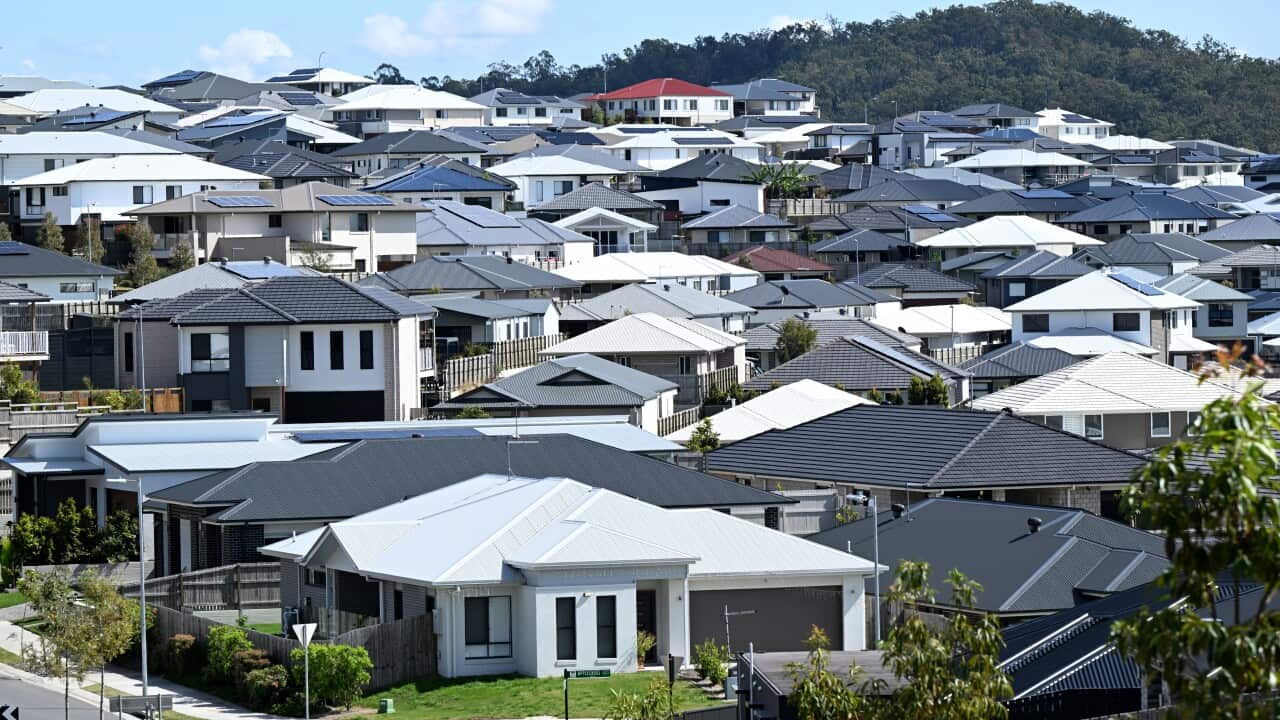Australian property prices are still lifting but the more muted pace of growth suggests affordability constraints are starting to bite, with one economist predicting another leg down for the national housing market in 2024.
Nationally, home values lifted by 0.4 per cent in December, with prices up 8.1 per cent in the 2023 calendar year as tracked by CoreLogic.
The monthly growth was the smallest gain since prices started rising again in February 2023 after a decline in 2022.
While poor affordability and more new listings kept price increases in the two biggest capital city markets in check, another month of convincing growth in Perth, Brisbane and Adelaide was recorded.
Dwelling values across the three smaller cities have been rising by about one per cent a month since May, based on monthly home value index.

House prices dipped in Melbourne during 2023. Source: AAP / Bianca De Marchi
Widening disparity
CoreLogic research director Tim Lawless said widening disparity across cities and regions was a defining trend of 2023.
"Such diversity across the capital cities can be broadly attributed to factors relating to demand and supply," Lawless said.
He said affordability constraints in the Queensland, South Australian, Western Australian capitals were not as severe as in Melbourne and Sydney.
"And advertised supply levels have remained persistently and substantially below average," he said.
In Melbourne and Sydney, dwelling growth has slowed sharply since June, with both markets yet to return to record highs.
In the harbourside city, home prices lifted 0.2 per cent during December.
Melbourne values fell 0.3 per cent, marking a second month in decline.
For the three smallest capital cities, it was overall a softer year in residential property.
Hobart dwelling values were down 0.8 per cent over 12 months, Darwin was 0.1 per cent lower and the Australian Capital Territory recorded a soft 0.5 per cent increase.
Cities outperformed the regions last year as regional migration trends normalised after the pandemic drove demand for homes outside the major urban centres.
What's the forecast for the housing market in 2024?
Nationally, Lawless said housing markets had lost some momentum.
"After monthly growth in home values peaked in May at 1.3 per cent, a rate hike in June and another in November, along with persistent cost of living pressures, worsening affordability challenges, rising advertised stock levels and low consumer sentiment, have progressively taken some heat out of the market through the second half of the year," he said.

The value of housing decreased in Hobart, Darwin and the ACT during the past 12 months. Source: AAP / Jono Searle
Easing auction clearance rates was another sign housing demand was struggling to keep up with a better supply of listings as well as stretched affordability from higher mortgage rates and cost of living pressures.
"The supply shortfall in the face of strong immigration had the upper hand in 2023, but high interest rates and their lagged impact along with poor affordability now appear to be starting to reassert themselves," he wrote in a note.
Under these conditions, the group's economists expect national home values to fall anywhere between three and five per cent in 2024.
"Of course, there is likely to be a big range around this with Sydney and Melbourne more at risk given higher debt levels but Adelaide, Brisbane and Perth likely to remain relatively stronger with lower listings, a benefit from interstate migration and lower debt levels," he said.
Prices should bottom out by mid-year and start recovering by later in 2024, he predicted, as the Reserve Bank is likely to start cutting rates.











